|
Di seguito gli interventi pubblicati in questa sezione, in ordine cronologico.
Just over half of rheumatology specialists believe cannabis or cannabis-based medicines can help in the treatment of rheumatic conditions like arthritis, according to a survey by the Canadian Rheumatology Association.
The results were published in the journal BMC Musculoskeletal Disorders.
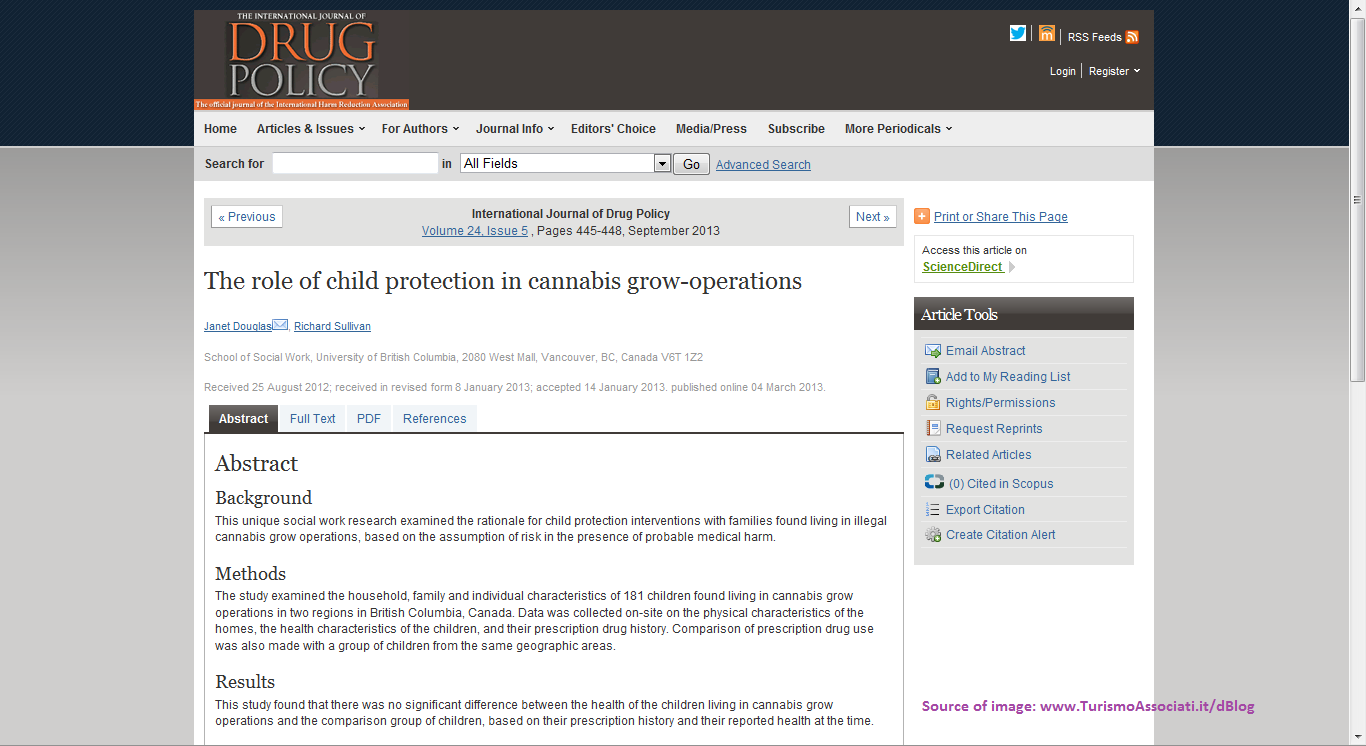
Of the 128 doctors that responded to the survey, 55% thought there was a role for cannabis or cannabinoids in treating rheumatic conditions. 45% said there was no role.
Despite the divide in opinion, the vast majority of respondents said they were unsure of how to prescribe cannabis.
Over 75% of respondents said they lacked confidence in their "current knowledge of the endocannabinoid system in health and disease." What's more, 90% of respondents said they would not feel confident writing a prescription that included dosing, frequency and method of administration.
Those that did feel confident recommending a dose offered 0.5-3 grams/day as a starting dose. A single dose per day was the most commonly recommended treatment schedule, with others suggesting 2-3 doses per day.
The lack of confidence among rheumatologists is concerning, conclude the authors of the survey, considering the widespread use of marijuana by patients with arthritis.
In 2013, federal data showed that more than half of Health Canada's 30,000 registered cannabis patients were using it to treat severe arthritis. Medical marijuana has been legal in Canada since 2001.
The authors conclude that the absence of human studies is likely a major factor in the lack of acceptance towards cannabis.
A survey by WebMD/Medscape earlier this year found a similar level of support (54%) for medical marijuana among rheumatology specialists in the U.S.
Source: LeafScience
Many people who use marijuana say that it helps relieve anxiety. On the other hand, there are just as many who report feeling more anxious after using marijuana. Although the exact details remain a mystery, a possible explanation may lie in the specific chemical make-up of cannabis.
As most marijuana users are aware, not all cannabis is the same. There are a wide range of strains available, and many are believed to have unique effects on their user.
What makes strains unique from one another is their active ingredients, also known as cannabinoids. Although clinical research is lacking, knowing the differences between strains and how they affect anxiety can be helpful.
THC vs. CBD
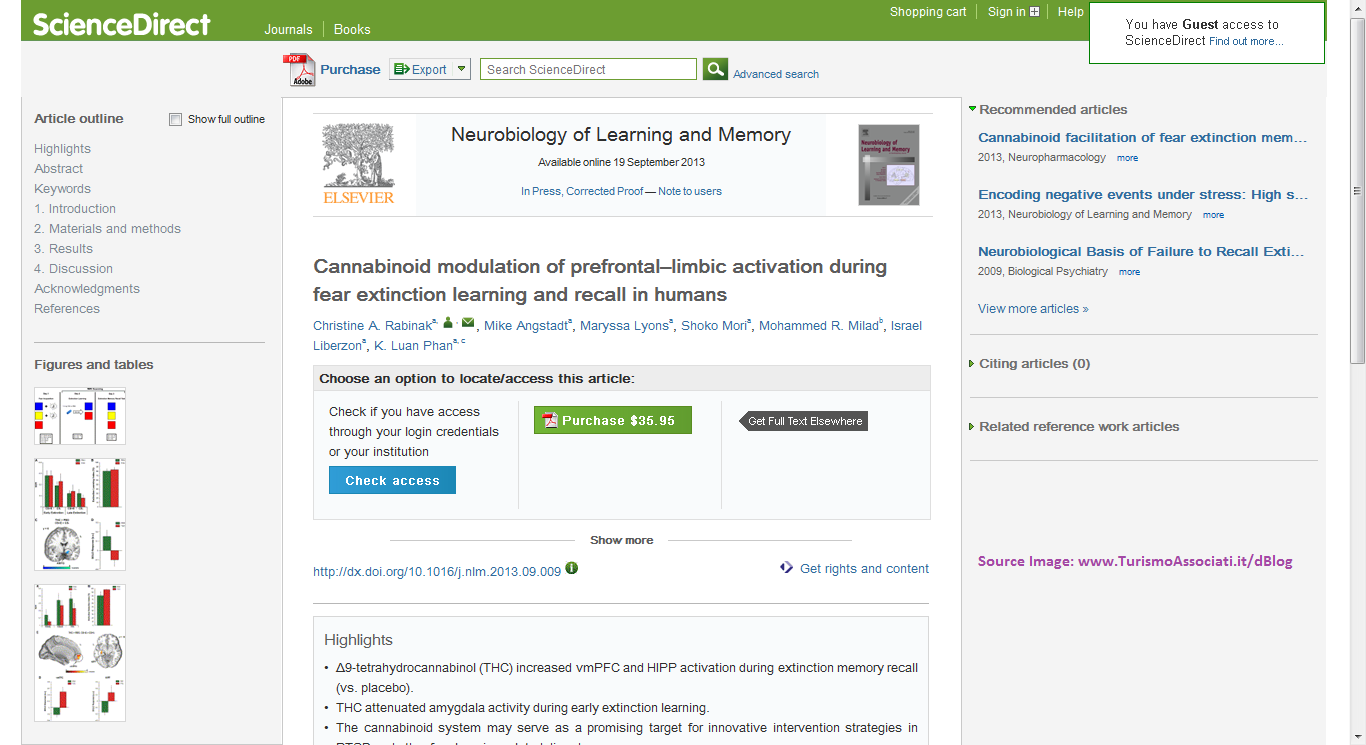
The two most common chemicals in cannabis are THC and CBD. Although most strains contain both compounds, levels of THC and CBD tend to vary from strain to strain. Interestingly, research shows that THC and CBD can have opposite effects on anxiety.
THC is responsible for the marijuana high and is also strongly linked to feelings of paranoia, especially when taken in high doses. This is because THC activates an area of the brain responsible for fear — the amygdala.
CBD, on the other hand, is believed to counteract the mind-altering effects of THC. What's more, studies have shown that when taken on its own CBD can lower anxiety in both healthy and anxiety-prone individuals.
Types of Cannabis
The reason why marijuana is often associated with anxiety may be because most plants are bred to be rich in THC. The way CBD and THC are produced within the plant causes strains with high THC to have less CBD (and vice versa).
High CBD strains have only recently become popular, due in part to growing awareness of the compound's medical effects. As a result, there's a strong chance that any marijuana you obtain will have more THC than CBD.
Other components in cannabis may also contribute to its effect on anxiety. Besides THC and CBD, cannabis contains over 60 different cannabinoids along with a variety of aromatic compounds known as terpenes.
Certain terpenes in cannabis have been found to possess anti-anxiety properties. Still, most of these chemicals are only present in trace amounts and little is known about their overall impact on marijuana users.
Avoiding Anxiety
Overcoming anxiety from cannabis could be as simple as reducing the amount of THC that you ingest. In fact, some studies suggest that THC at low doses can have an anti-anxiety effect.
Research conducted in animals shows that THC begins to raise anxiety levels only after a certain threshold is passed. Although it's hard to predict what your threshold might be, people who use cannabis frequently tend to have a higher threshold. This is because of the desensitization to marijuana, or tolerance, that develops.
For those specifically looking to treat anxiety disorders with cannabis, the best bet may be to find strains with high CBD content. A breakdown of a strain's THC and CBD content is often provided where the sale of cannabis is regulated.
Source: LeafScience
Just over half of rheumatology specialists believe cannabis or cannabis-based medicines can help in the treatment of rheumatic conditions like arthritis, according to a survey by the Canadian Rheumatology Association.
The results were published last month in the journal BMC Musculoskeletal Disorders.
Of the 128 doctors that responded to the survey, 55% thought there was a role for cannabis or cannabinoids in treating rheumatic conditions. 45% said there was no role.
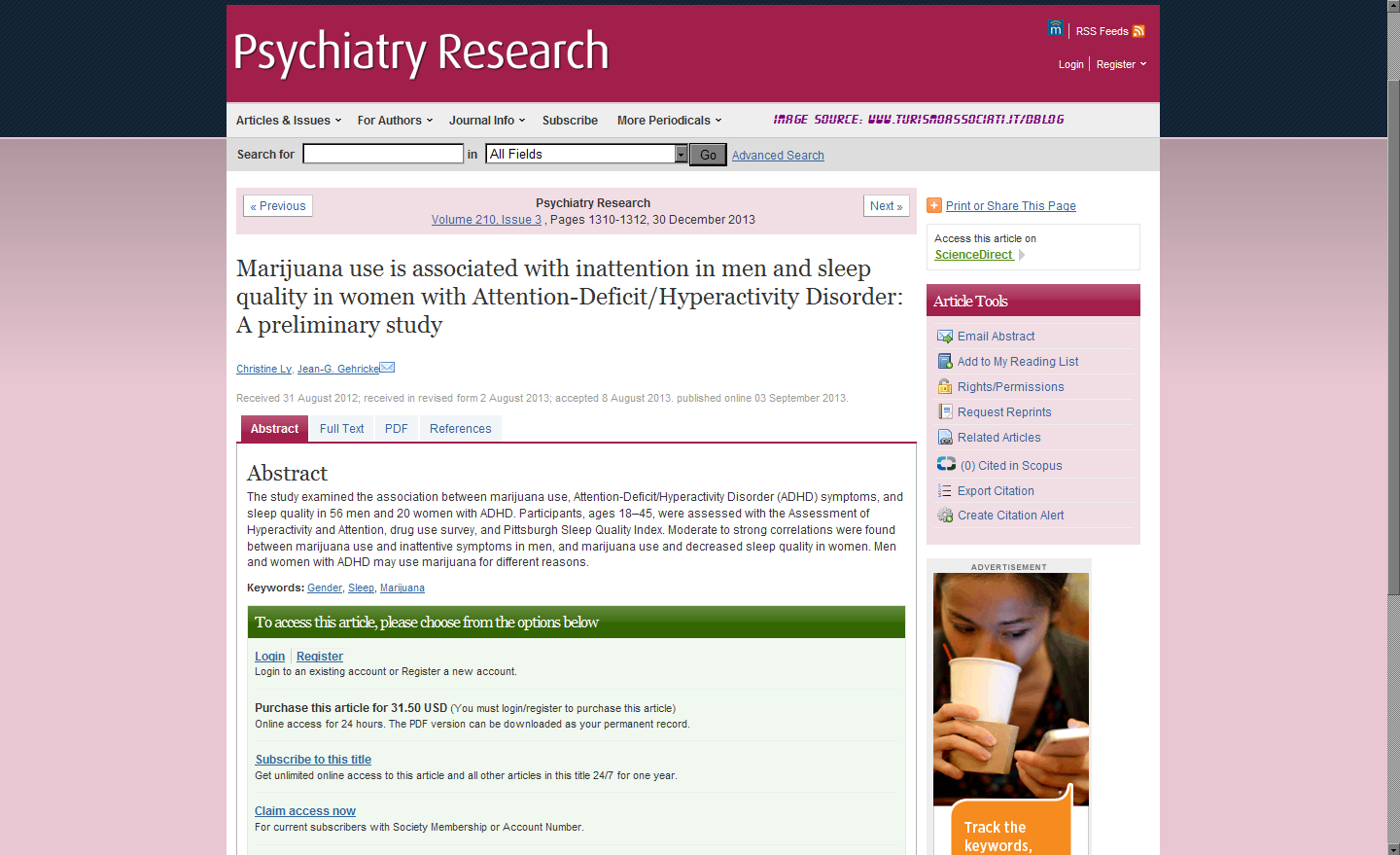
Despite the divide in opinion, the vast majority of respondents said they were unsure of how to prescribe cannabis.
Over 75% of respondents said they lacked confidence in their "current knowledge of the endocannabinoid system in health and disease." What's more, 90% of respondents said they would not feel confident writing a prescription that included dosing, frequency and method of administration.
Those that did feel confident recommending a dose offered 0.5-3 grams/day as a starting dose. A single dose per day was the most commonly recommended treatment schedule, with others suggesting 2-3 doses per day.
The lack of confidence among rheumatologists is concerning, conclude the authors of the survey, considering the widespread use of marijuana by patients with arthritis.
In 2013, federal data showed that more than half of Health Canada's 30,000 registered cannabis patients were using it to treat severe arthritis. Medical marijuana has been legal in Canada since 2001.
The authors conclude that the absence of human studies is likely a major factor in the lack of acceptance towards cannabis.
A survey by WebMD/Medscape earlier this year found a similar level of support (54%) for medical marijuana among rheumatology specialists in the U.S.
Source: LeafScience
People who smoke marijuana before bed often struggle to recall their dreams the next morning. Yet, when these individuals stop smoking, they tend to experience more vivid dreams than before.
Marijuana is known to affect various aspects of sleep, including activities that are not involved with dreaming. But there's a simple reason why marijuana users tend to have less dreams.

This phenomenon can be explained by how marijuana affects the sleep cycle, specifically a stage known as rapid eye movement (REM) sleep.
Marijuana and REM Sleep
The brain is most active during REM sleep and most dreaming is thought to occur during this stage. Numerous studies have shown that using marijuana before bed reduces REM sleep. Researchers believe this is why marijuana users report fewer dreams.
During the night, the brain cycles through 4 different stages of sleep, spending the most time in deep sleep (or slow-wave sleep) and REM sleep. The amount of time spent in these two stages is closely related. In fact, studies show that marijuana lengthens the time the brain spends in deep sleep, which leads to less REM sleep.
Ingesting THC or marijuana before bed also appears to reduce the density of rapid eye movements during REM sleep. Interestingly, less REM density has been linked to more restful sleep.
Most studies on marijuana and REM sleep have looked at the effects of THC. However, other compounds in marijuana may interfere with THC's effect on sleep. For example, CBD has been found to promote wakefulness compared to taking THC alone.
What Happens When Quitting
Regular users of cannabis experience an abnormal increase in REM sleep when use is stopped. This is called the REM rebound effect, which leads to longer and denser periods of REM sleep. The REM rebound explains why cannabis users often experience highly vivid dreaming when trying to quit.
The sleep disturbances that occur during cannabis withdrawal usually begin 24-72 hours after quitting and can persist for up to 6-7 weeks.
Interestingly, the REM rebound is not unique to cannabis use. Other substances that interfere with sleep, such as alcohol and sleep medications, can cause REM rebound too. What's more, people who are sleep deprived often undergo a rebound in non-REM sleep.
The rebound effect appears to be the body's way of coping with being deprived of certain stages of sleep.
The Importance of REM Sleep
While healthy people should avoid taking substances that alter their sleep, it's not clear whether the effect of marijuana on REM sleep is actually harmful. In fact, experts are still not sure why we need REM sleep.
On the other hand, deep sleep is believed to be the most important sleep stage for repairing and restoring the body. Likewise, studies show that when deprived of sleep, the brain prioritizes deep sleep over REM sleep.
While more research is needed, it's possible that the ability of marijuana to increase deep sleep, even at the expense of REM sleep, might turn out to be a good thing.
Source: LeafScience
It's no secret that marijuana can affect a person's memory. In today's society, the stereotypical marijuana user is often perceived as someone who is forgetful and absent-minded.
But what does science say, and is there any truth behind this popular belief?

Effects On Memory
Tetrahydrocannabinol (THC), the main psychoactive ingredient in marijuana, is known to impair nearly all aspects of memory. There is one exception, though. THC does not affect the recall of existing memories.
The most obvious effect of THC is the disruption of short-term memory. This means it will be harder to form new memories while high. THC also impairs the consolidation of short-term memories into long-term memories. This makes it difficult to remember what happened during the high — even after it wears off.
But THC does not impair your ability to recall existing memories. So, marijuana users will be able to remember things like their name and where they live, no matter how high they might get. Similarly, marijuana use does not lead to memory loss or dementia.
In fact, experts believe that the body's endocannabinoid system — a biological system made up of naturally occurring, marijuana-like compounds — acts to regulate memory formation. Specifically, it seems to function as a filter of sorts, preventing the brain from being overloaded with irrelevant or useless memories.
Dosing, Tolerance & Long-term Use
The effects of THC on memory seem to depend on dose, with larger doses having a more severe effect. But studies also show that frequent users tend to be more tolerant to marijuana and its effects.
Some studies suggest that CBD may act to reduce the memory impairments of THC. However, not enough research exists to say for certain whether this is true.
But the fact that THC impairs memory is a cause for concern, especially in cases of chronic use. However, studies have found that memory impairments are less noticeable, or sometimes absent, in heavy users. This is likely due to the tolerance that heavy users often develop.
What's more, the memory impairments do not seem to be permanent. Studies show that memory function in long-term users returns to normal once marijuana use is stopped.
Forgetting Bad Memories
While memory impairment is a downside for most marijuana users, THC can help some people forget bad memories.
In fact, studies show that the endocannabinoid system is directly involved with the extinction of negative memories. By acting on the endocannabinoid system, THC is believed to facilitate this extinction.
As a result, THC is believed to hold promise in treating anxiety disorders such as post-traumatic stress disorder (PTSD). Experts believe that marijuana can help patients with PTSD cope with traumatic memories by improving their ability to forget.
Source: LeafScience
CBD is usually taken orally as a cannabis-based concentrate or extract. However, compared to smoking or vaporizing, ingesting cannabinoids orally poses a number of drawbacks, including inconsistent absorption and a delayed effect.
Vaporizing is considered a healthier alternative to smoking, and many cannabis users are now starting to switch. Unfortunately, most research involving vaporizers has focused only on THC. In fact, up till now, no study has been conducted on vaporizing CBD.

The very first study to investigate the process of vaporizing CBD was published Oct. 16 by a team at the University of Wollongong in Australia. Overall, it showed that CBD can indeed be vaporized using conventional cannabis devices. One of the most popular models, the Volcano vaporizer, was chosen for the study.
The team conducted experiments using combinations of purified THC and CBD, in order to determine the best way of administering CBD via vaporizer. Here’s what they found:
Temperature
CBD begins to evaporate at a temperature of around 200°C (392°F), similar to THC, making it possible to release CBD as a gas without burning the plant matter.
In the study, vaporizing at 230°C (446°F) seemed to release more CBD than vaporizing at 210°C (410°F).
Conversion Rate
At lower doses (4-8 mg), as much as 97% of CBD was vaporized. However, the conversion rate dropped significantly as the dose increased. At 200 mg, just 40% of CBD was converted to vapor.
Interestingly, when administered together, the dose of CBD seemed to affect the conversion rate of THC. On average, 55% of THC was converted to vapor.
Dose
The researchers found 200 mg to be the maximum dose of CBD that could be vaporized efficiently, with higher doses producing a saturation effect.
However, the point of CBD saturation seems to be related to the vaporizer and its heating efficiency, meaning that different vaporizers may allow for higher or lower doses to be vaporized at once.
Source: LeafScience
Gary Wenk, PhD, professor of neuroscience, immunology and medical genetics at Ohio State University, has studied how to combat brain inflammation for over 25 years.
His research has led him to a class of compounds known as cannabinoids, which includes many of the common ingredients in marijuana.
He says, throughout all of his research, cannabinoids have been the only class of drugs he's found to work. What's more, he believes early intervention may be the best way of fighting Alzheimer's.
Dr. Wenk doesn't see cannabinoids – or anything else – as a cure. But he took the time to discuss with us how marijuana might prevent the disorder from developing.
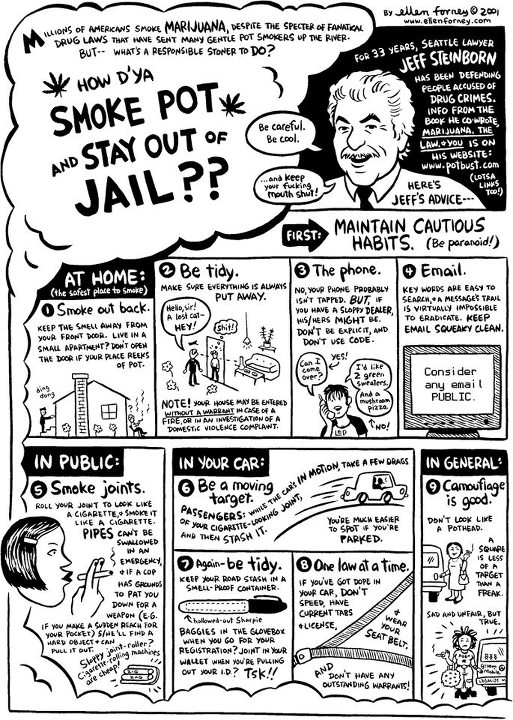
Q: What's so important about brain inflammation?
Over the past few years, there's been a focus on inflammation in the brain as causing a lot more than Alzheimer's. We now know it plays a role in ALS, Parkinson's disease, AIDS, dementia, multiple sclerosis, autism, schizophrenia, etc.
We're beginning to see that inflammation in the brain, if it lasts too long, can be quite detrimental.
And if you do anything, such as smoke a bunch of marijuana in your 20s and 30s, you may wipe out all of the inflammation in your brain and then things start over again. And you simply die of old age before inflammation becomes an issue for you.
Q: Does this apply to other anti-inflammatories?
Another analogy would be, if you're lucky enough to get arthritis by the age of 40, and you start taking a lot of anti-inflammatories, whatever it might be, your chances of getting Alzheimer's disease are very low because you've been treating yourself day after day with these anti-inflammatories in high doses.
So the epidemiology has been sort of tapped to say, 'look, inflammation is behind a lot of diseases and anything people do – that is, consume a drug, take a nutrient, or eat something that is anti-inflammatory – is beneficial.'
Q: There's some evidence that marijuana can improve symptoms. Why is that, considering its effect on memory?
One of our findings is almost any low dose of cannabinoids in a young brain produces an impairment. What we found was that the same very, very low dose in an old brain didn't impair our animals. So as our brain ages, how it responds to any drug, including cannabinoids, changes. And that may be beneficial in the case of cannabinoids.
Still, the evidence usually involves transgenic mice. I've never found those mice, that they love to call Alzheimer's models, are very good models.
So I'm not willing to say cannabinoids, from that data, could treat Alzheimer's. But the evidence thus far, that it has properties that would slow the onset, I think is far more compelling.
Q: What's the conclusion then?
I think all we can say safely so far is using low doses of marijuana for prolonged periods of time at some point in your life, possibly when you're middle-aged to late middle-aged, is probably going to slow the onset or development of dementia, to the point where you'll most likely die of old age before you get Alzheimer's.
"We believe Alzheimer's begins when you're born"
That's actually where most of us are going with our research. In truth, we don't think we'll ever cure it – too much has gone wrong with the brain.
But if we can intervene with enough people, then we can slow the development and keep them out of nursing homes. That saves the government and families an awful lot of money. So most companies are just hoping, if we can delay the entry of Alzheimer's patients into a nursing home by just a year, you're saving hundreds of millions of dollars.
Now we believe Alzheimer's begins when you're born. This is why we think by age 30 we can diagnose it. A cure is what we tell, you know, the popular press. The reality is we're just hoping to slow it down.
Source: LeafScience
...IT CONTINUES. HERE.
Since almost all people have a strong affinity to sex, a sexual subliminal message would be the most effective one. Embedded on a certain product it's supposed to trigger viewers attention, emotions and stir up affinity in him toward the product. Unfortunately, as you're going to see for yourself, this principle has been heavily misused, abused and misapplied. Blatant sexuality on the verge of pornography can be easily found in public advertising, family movies, cartoons and children products.

The famous Farrah Fawcett’s “SEX” in the hair:

This poster had been one of the major urban legends of the late 70s. It was always puzzling why this image in particular became incredibly popular (over 12 millions copies sold). After all, there were plenty of other posters of scantily clad attractive young women.
The word SEX in print media is usually embedded into hair, creases in clothing, facial lines, or rough background surfaces. Often some noise added to disguise it, like in the House snapshot, or it can be spelled as "ssex" or "sexx", etc.
Letter-looking patterns can naturally occur in such mediums. An artist usually looks for these patterns and starts from there. For example in the following Jantzen ad the letter "X" is already formed by the stitches of the man's shirt. Then the shadow of his hand was modified a bit to look like an "E" and the letter "S"—purportedly a water ripple—was lightly painted in the gap under his arm.
A one word guarantee:

Another technique is to write numerous SEXes in interweaving mosaic-like manner on a transparent overlay which can be superimposed onto any photograph at any intensity level desired. So in the next image there are many transparent words SEX written all over her face: forehead, lips, hair, chin etc. That's besides the crown concealing the word SEX in its design.

The Inhabited Island 2. On the 8th minute of the movie slowly moving camera focuses on a wall for about 10 seconds. Quite bluntly the word SEX is etched in the stone. The family picture nearby serves as a camouflage for another word SEX. This is just one of many instances throughout the movie. Ironically, the storyline revolves around ruling elite using covert mind control means to manipulate population for their own designs and here we are: the movie makers use covert mind control means to manipulate the viewer for their own designs.

Click image for animated gif with highlight.
Another interesting technique is embedding of anamorphic images—kind of what you see when you look into a funny mirror at an amusement park or into a shiny coffee pot at home. These distorted, often grotesque images serve as a decoy for the real message which can be hidden within the ground (foliage, flowers, landscapes, reflections in bottles, ice cubes, symbols, and so forth). Although it is not consciously obvious, it may very well be obvious to our subconsciousness and recorded there.
A surprisingly large amount of subliminal death symbolism is also utilized—skulls hidden in ice cubes, clouds, etc., the word DEATH or DETH often hidden in backgrounds.
During the evolutionary development of humans, subliminal perceptions were certainly involved with survival and adjustment. Creative innovators such as artists, poets, writers and composers have utilized man's subliminal potentialities for many centuries. In at least one Rembrandt painting, for example, a hidden SEX appears (spelled as seks in Dutch). Paintings of Monet are also abundant with it.
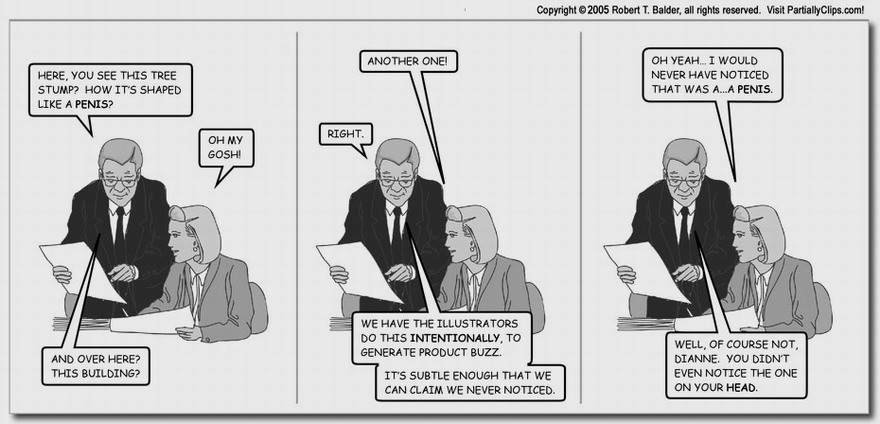
Source: subliminalmanipulation.blogspot.ro - Author: Jonathan Adampants
Subliminal perception is a deliberate process created by communication technicians, whereby you receive and respond to information and instructions without being aware of it. Messages in the form of printed words, pictures or voices presented either very rapidly or very obscurely bypass your conscious awareness. Anything consciously perceived can be evaluated, criticized, discussed, argued, and possibly rejected. Anything programmed subliminally to your subconsciousness meets no resistance. This subliminal information is stored in your brain and capable of influencing your judgment, behavior and attitudes.
The use of subliminal techniques in print communication media has been going on in the United States at least since the World War I period. For example, Norman Rockwell's first cover on The Saturday Evening Post during 1917 incorporated embedded SEXes. Whenever an embedded word or picture accidentally became consciously visible, the readers would pass it off as a joke, an accident, or a product of their imaginations.

Jonathan Adampants gives a full in-depth analysis of the mind manipulation and NLP (neuro-linguistic programming) techniques utilised by Fox News anchors Sean Hannity and Alan Colmes during an interview with Kevin Barrett about 9/11.
Serious commercial experiments with subliminal messaging were conducted in the mid 50-s. On June 22, 1956, the British Broadcasting Corporation experimented with projecting subliminal images on television. Pictures were flashed on the screen too quickly to be seen consciously, but they did make an impression on the subconscious. The BBC experiment was followed by experiments by the Canadian Broadcasting Corporation, Mexico's Televisa commercial TV and radio network, US TV station WTWO in Bangor and many more.
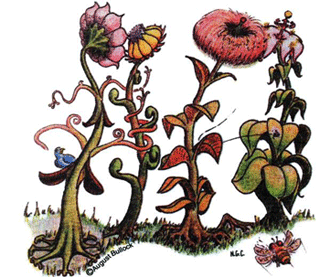
Typical and most famous picture with subliminal message
Experiments were not limited to television. In 1958, radio station WAAF in Chicago broadcast "subaudible" commercials. Seattle's KOL broadcast hardly audible taped messages "below" the music played by its disc jockeys. "How about a cup of coffee?" was one, and "Someone's at the door" was another. On December 8, 1972, The New York Times reported that In-Flight Motion Pictures, Inc. would begin selling subliminal commercials embedded in the movies they would distribute to all the major airlines. Supermarkets across the country are reducing theft an average 30 to 50 percent by broadcasting subliminal messages such as "I will not steal" and "We are watching you". Stimutech, Inc. of East Lansing, Michigan markets a computer video system that flashes subliminal messages on your television while you watch the regular programming. Subliminal messages are prepared by teams of psychologists who use Freudian ideas to change the thinking patterns and behavior of the viewer.

The most known experiment with subliminal messaging was conducted by a marketing researcher and psychologist James Vicary in 1957 during the presentation of the movie Picnic. Every 5 seconds the words "Hungry? Eat popcorn. Drink Coca Cola" were projected for 0.003 seconds. That is extremely fast. What you see in the picture on the left, for example, flashes for 0.04 seconds. Sales of popcorn and Coke in that New Jersey theater increased 57.8 percent and 18.1 percent respectively. Numerous scientific researches following these experiments confirmed beyond any doubt that subliminal messaging works. When advertising industry and government agencies understood the potential of subliminal messaging they started investing millions in developing and perfecting of subliminal techniques, which can be used not only for marketing, but also for propaganda and mind control. In 1962 Vicary suddenly confesses that he fabricated the results of his experiment... Why would someone discredit himself in such a way and lose his dignity and credibility? It's obvious that he was paid to do so by those who use subliminal messages to manipulate you. Remember the quote from "Usual Suspect" : The greatest trick the Devil ever pulled was convincing the world he didn't exist... That's exactly the trick they are trying to pull, I.E. convincing the world that subliminal technique does not work. And they did a pretty good job. There are so many people that refuse to believe that a secret technology which modifies behavior invisibly, channels basic value systems, manages human motives and drives them into pathological behaviors in the interest of certain power structures has been in existence and widespread use for decades if not more. They will call you crazy if you'll dare to say anything like that and yet subliminal messages are being bombarded at you continuously throughout the day, through books, movies, magazines, television, radio and music. Every major newspaper, every poster, every magazine in America have subliminal messages embedded in them.
So how can something that we don't notice affect our behavior? Well, unheeded doesn't mean unseen. Let us first understand how our perception works. As you know, our mind consists of two interacting parts: conscious and subconscious. The subconscious part of mind operates below the level of conscious awareness, it controls reflexes, automatic functions and handles the processing and storing of incoming information. Subconsciousness is able to process 20,000 bits of information simultaneously, while consciousness can deal only with 7 ± 2 bits of information at the same time.
Instead of the simplistic five senses of Aristotle—sight, hearing, taste, touch, and smell— there are at least thirty-seven known, differentiated sensory inputs into the brain. All of the information picked by these senses is sent to the brain and absorbed by the subconsciousness, however, only very concrete and relevant data is passed to the conscious mind after it has been processed and reduced. All the rest remains ignored. A good example of this is the Cocktail Party Effect : You can talk with a friend in a crowded party and still listen and understand what he says even if the place is very noisy. You can simultaneously ignore what another nearby person is saying, but if someone over the other side of the room suddenly mentiones your name, you notice that sound and respond to it immediately. Not only that your name immediately triggers your attention, you usualy are aware of the entire sentence it has came in. From this experience we can learn that our brain records everything that takes place around us. Interesting that certain words like SEX, BLOOD, DEATH, FUCK and such have the same effect in triggering your attention as your name.
So, only the information considered as "relevant" goes to the consciousness. Non essential information, short or vague stimuli are stored in the subconscious without reaching our awareness. Important to stress that they are NOT discarded, but stored. E V E R Y T H I N G you have ever experienced in your life, from every stranger's face you have ever glanced at in a crowd to every spider web you gazed at as a child, can be retrieved from your memory by hypnosis or by electrical stimulation of the brain cells in temporal lobes. Hence whatever was subliminally put into your brain will stay there forever and in the right circumstances will trigger the right reaction in you. That is not being said that subliminal messages determine your reaction in an inexorable manner. The accepted opinion is that subliminal messages rather strengthen, accelerate and reinforce reactions in persons who are ALREADY PREDISPOSED to the subject of the message. But I guess one can't be sure.
The most common subliminal message is S E X.

Clone High E09 (click for animated gif)

New X-men #118

Screenshot from House (S06E05)

Harry Potter and the Half-blood prince

Click images for highlights if you can't see subliminal embeds.
TO BE CONTINUED... HERE.
In recent years, a focus on brain structures and regions has given way to an emphasis on neurological networks: how cells and regions interact, with consciousness shaped not by any given set of brain regions, but by their interplay.
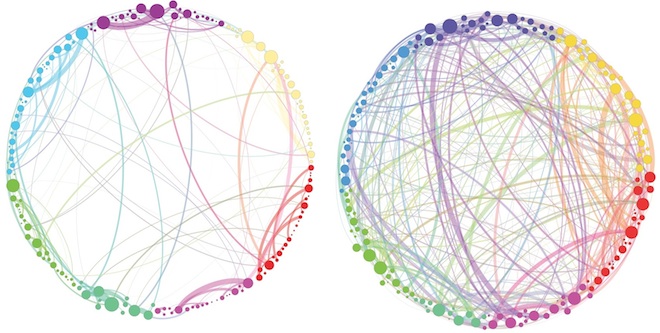
Understanding the networks, however, is no easy task, and researchers are developing ever more sophisticated ways of characterizing them. One such approach, described in a new Proceedings of the Royal Society Interface study, involves not simply networks but networks of networks.
Perhaps some aspects of consciousness arise from these meta-networks—and to investigate the proposition, the researchers analyzed fMRI scans of 15 people after being injected with psilocybin, the active ingredient in magic mushrooms, and compared them to scans of their brain activity after receiving a placebo.
Investigating psychedelia wasn't the direct purpose of the experiment, said study co-author Giovanni Petri, a mathematician at Italy's Institute for Scientific Interchange. Rather, psilocybin makes for an ideal test system: It's a sure-fire way of altering consciousness.
"In a normal brain, many things are happening. You don't know what is going on, or what is responsible for that," said Petri. "So you try to perturb the state of consciousness a bit, and see what happens."
A representation of that is seen in the image above. Each circle depicts relationships between networks—the dots and colors correspond not to brain regions, but to especially connection-rich networks—with normal-state brains at left, and psilocybin-influenced brains at right.
In mathematical terms, said Petri, normal brains have a well-ordered correlation state. There's not much cross-linking between networks. That changes after the psilocybin dose. Suddenly the networks are cross-linking like crazy, but not in random ways. New types of order emerge.
"We can speculate on the implications of such an organization," wrote the researchers, who were led by neurobiologist Paul Expert of King's College London. "One possible by-product of this greater communication across the whole brain is the phenomenon of synaesthesia"—the experience, common during psychedelic experiences, of sensory mix-up: tasting colors, feeling sounds, seeing smells, and so on.
Petri notes that the network depiction above is still a simplified abstraction, with the analysis mapped onto a circular, two-dimensional scaffold. A truer way of visualizing it, he said, would be in three dimensions, with connections between networks forming a sponge-like topography.
That level of interpretation is still beyond the researchers' mathematical ken, Petri says. They hope to refine their methods in future research, and to track network fluctuations over longer periods of time and with different drugs.
"The big question in neuroscience is where consciousness comes from," Petri said. For now, he said, "We don't know."
Source: wired
--- --- ---
Incognito browsing: pages you view in incognito tabs won't stick around in your browser's history, cookie store, or search history after you've closed all of your incognito tabs. Any files you download will be kept. Arsène Lupin recommends: incognito BROWSER !
This app was created by ® TurismoAssociati. it/dBlog - Educate Yourself with Information © CC - Attribution - Non Commercial - Share Alike. Browse or download our free & certified applications for Windows Phone: http://www.windowsphone.com/en-us/store/app/incognito-browser/8a369f42-a97e-4947-bef5-4ba406536bd8
|